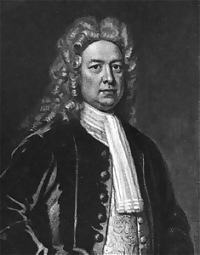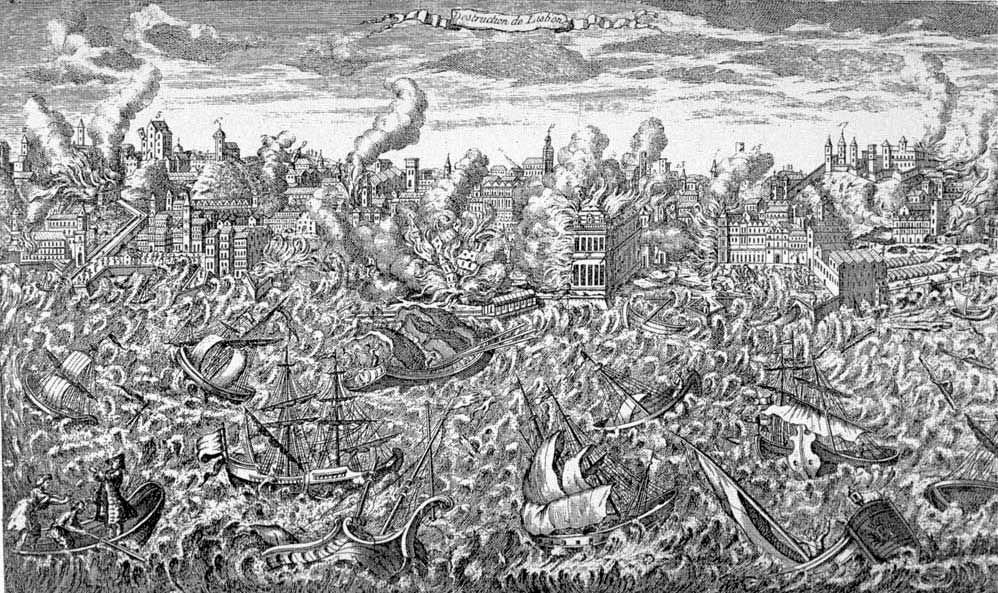|
Battle Of Minorca (1756)
The Battle of Minorca (20 May 1756) was a naval battle between French and British fleets. It was the opening sea battle of the Seven Years' War in the European theatre. Shortly after the war began British and French squadrons met off the Mediterranean island of Minorca. The French won the battle. The subsequent decision by the British to withdraw to Gibraltar handed France a strategic victory and led directly to the Fall of Minorca. The British failure to save Minorca led to the controversial court-martial and execution of the British commander, Admiral John Byng, for "failure to do his utmost" to relieve the siege of the British garrison on Minorca. Background The French had been menacing the British-held garrison on Minorca, which had come under British control during the War of the Spanish Succession in 1708. Great Britain and France had commenced hostilities in the New World colonies earlier in 1754 (the French and Indian War), and at this point the conflict was n ... [...More Info...] [...Related Items...] OR: [Wikipedia] [Google] [Baidu] |
Seven Years' War
The Seven Years' War, 1756 to 1763, was a Great Power conflict fought primarily in Europe, with significant subsidiary campaigns in North America and South Asia. The protagonists were Kingdom of Great Britain, Great Britain and Kingdom of Prussia, Prussia versus Kingdom of France, France and Habsburg monarchy, Austria, the respective coalitions receiving by countries including Portuguese Empire, Portugal, Spanish Empire, Spain, Electorate of Saxony, Saxony, Age of Liberty, Sweden, and Russian Empire, Russia. Related conflicts include the Third Silesian War, French and Indian War, Carnatic wars, Third Carnatic War, Anglo-Spanish War (1762–1763), Anglo-Spanish War (1762–1763), and Spanish–Portuguese War (1762–1763), Spanish–Portuguese War. Although the War of the Austrian Succession ended with the Treaty of Aix-la-Chapelle (1748), none of the signatories were happy with the terms, and it was generally viewed as a temporary armistice. It led to a strategic realignment kn ... [...More Info...] [...Related Items...] OR: [Wikipedia] [Google] [Baidu] |
Gibraltar
Gibraltar ( , ) is a British Overseas Territories, British Overseas Territory and British overseas cities, city located at the southern tip of the Iberian Peninsula, on the Bay of Gibraltar, near the exit of the Mediterranean Sea into the Atlantic Ocean (Strait of Gibraltar). It has an area of and is Gibraltar–Spain border, bordered to the north by Spain (Campo de Gibraltar). The landscape is dominated by the Rock of Gibraltar, at the foot of which is a densely populated town area. Gibraltar is home to some 34,003 people, primarily Gibraltarians. Gibraltar was founded as a permanent watchtower by the Almohad Caliphate, Almohads in 1160. It switched control between the Nasrids, Crown of Castile, Castilians and Marinids in the Late Middle Ages, acquiring larger strategic clout upon the destruction of nearby Algeciras . It became again part of the Crown of Castile in 1462. In 1704, Anglo-Dutch forces Capture of Gibraltar, captured Gibraltar from Spain during the War of the S ... [...More Info...] [...Related Items...] OR: [Wikipedia] [Google] [Baidu] |
Nicolas Ozanne
Nicolas-Marie Ozanne (12 January 1728 – 5 January 1811) was a naval engineer and marine artist, author of a naval treatise and creator of a series of 60 views of the ports of France. His work witnesses to the French Navy of his time, particularly the Ponant (western) fleet. Life Ozanne was born in Brest, France. His drawing skills were recognised at a very early age and aged only 10 he was given a place in the studio of Robelin, a drawing master in the gardes de la marine, becoming his assistant in 1742. There he was talent-spotted by Bigot de la Mothe, who had him draw plans for coastal gun batteries.Dinechin, ''Duhamel du Monceau'' He was only 16 when his father died. Nicolas-Marie then took on his brothers and sisters to his careHis sister, Jeanne-Françoise Ozanne, (10 October 1735, Brest – 20 February 1795, Paris), was an engraver – her works include ''Vues de Dieppe, de Saint- Valéry, de Livourne, des colonies françaises''. His second sister, Marie-Jeanne Ozanne ( ... [...More Info...] [...Related Items...] OR: [Wikipedia] [Google] [Baidu] |
French West Indies
The French West Indies or French Antilles (, ; ) are the parts of France located in the Antilles islands of the Caribbean: * The two overseas departments of: ** Guadeloupe, including the islands of Basse-Terre, Grande-Terre, Les Saintes, Marie-Galante, and La Désirade. ** Martinique * The two overseas collectivities of: ** Saint Martin, the northern half of the island with the same name, the southern half is Sint Maarten, a constituent country of the Kingdom of the Netherlands. ** Saint Barthélemy History Pierre Belain d'Esnambuc was a French trader and adventurer in the Caribbean, who established the first permanent French colony, Saint-Pierre, on the island of Martinique in 1635. Belain sailed to the Caribbean in 1625, hoping to establish a French settlement on the island of St. Christopher (St. Kitts). In 1626 he returned to France, where he won the support of Cardinal Richelieu to establish French colonies in the region. Richelieu became a shareholder in the C ... [...More Info...] [...Related Items...] OR: [Wikipedia] [Google] [Baidu] |
Treaty Of Paris (1763)
The Treaty of Paris, also known as the Treaty of 1763, was signed on 10 February 1763 by the kingdoms of Kingdom of Great Britain, Great Britain, Kingdom of France, France and Spanish Empire, Spain, with Kingdom of Portugal, Portugal in agreement, following Great Britain and Prussia's victory over France and Spain during the Seven Years' War. The signing of the treaty formally ended the conflict between France and Great Britain over control of North America (the Seven Years' War, known as the French and Indian War in the United States), and marked the beginning of an era of British dominance outside Europe. Great Britain and France each returned much of the territory that they had captured during the war, but Great Britain gained much of New France, France's possessions in North America. Additionally, Great Britain agreed to protect Roman Catholicism in the New World. The treaty did not involve Prussia and Habsburg monarchy, Austria, as they signed a separate agreement, the Tr ... [...More Info...] [...Related Items...] OR: [Wikipedia] [Google] [Baidu] |
William Pitt, 1st Earl Of Chatham
William Pitt, 1st Earl of Chatham (15 November 170811 May 1778) was a British people, British British Whig Party, Whig politician, statesman who served as Prime Minister of Great Britain from 1766 to 1768. Historians call him "Chatham" or "Pitt the Elder" to distinguish him from his son William Pitt the Younger, who also served as prime minister. Pitt was also known as "the Great Commoner" because of his long-standing refusal to accept a title until 1766. Pitt was a member of the British cabinet and with a brief interlude in 1757, its informal leader from 1756 to 1761, during the Seven Years' War (including the French and Indian War in the Thirteen Colonies, American colonies). He again led the ministry, holding the official title of Lord Privy Seal, between 1766 and 1768. Much of his power came from his brilliant oratory. He was out of power for most of his career and became well known for his attacks on the government, such as those on Robert Walpole, Walpole's corruption in ... [...More Info...] [...Related Items...] OR: [Wikipedia] [Google] [Baidu] |
Candide
( , ) is a French satire written by Voltaire, a philosopher of the Age of Enlightenment, first published in 1759. The novella has been widely translated, with English versions titled ''Candide: or, All for the Best'' (1759); ''Candide: or, The Optimist'' (1762); and ''Candide: Optimism'' (1947). A young man, Candide, lives a sheltered life in an Garden of Eden, Edenic paradise, being indoctrinated with Gottfried Leibniz#Theodicy and optimism, Leibnizian optimism by his mentor, Professor Pangloss. This lifestyle is abruptly ended, followed by Candide's slow and painful disillusionment as he witnesses and experiences great hardships in the world. Voltaire concludes ''Candide'' with, if not rejecting Leibnizian optimism outright, advocating a deeply practical precept, "we must cultivate our garden", in lieu of the Leibnizian mantra of Pangloss, "all is for the best" in the "best of all possible worlds". ''Candide'' is characterized by its tone as well as its erratic, fantastical, ... [...More Info...] [...Related Items...] OR: [Wikipedia] [Google] [Baidu] |
Voltaire
François-Marie Arouet (; 21 November 169430 May 1778), known by his ''Pen name, nom de plume'' Voltaire (, ; ), was a French Age of Enlightenment, Enlightenment writer, philosopher (''philosophe''), satirist, and historian. Famous for his wit and his criticism of Christianity (especially Criticism of the Catholic Church, of the Roman Catholic Church) and of slavery, Voltaire was an advocate of freedom of speech, freedom of religion, and separation of church and state. Voltaire was a versatile and prolific writer, producing works in almost every literary form, including Stageplay, plays, poems, novels, essays, histories, and even scientific Exposition (narrative), expositions. He wrote more than 20,000 letters and 2,000 books and pamphlets. Voltaire was one of the first authors to become renowned and commercially successful internationally. He was an outspoken advocate of civil liberties and was at constant risk from the strict censorship laws of the Catholic French monarchy. H ... [...More Info...] [...Related Items...] OR: [Wikipedia] [Google] [Baidu] |
Articles Of War
The Articles of War are a set of regulations drawn up to govern the conduct of a country's military and naval forces. The first known usage of the phrase is in Robert Monro's 1637 work ''His expedition with the worthy Scot's regiment called Mac-keyes regiment etc.'' (in the form "Articles of warres") and can be used to refer to military law in general. In Swedish, the equivalent term ''Krigsartiklar'', is first mentioned in 1556. However, the term is usually used more specifically and with the modern spelling and capitalisation to refer to the British regulations drawn up in the wake of the Glorious Revolution and the United States regulations later based on them. United Kingdom Throughout the Articles' existence, there were separate sets for the army and navy. Royal Navy England's first Articles of War were written for the Royal Navy. They formed the statutory provisions regulating and governing the behaviour of members of the Royal Navy. They were prominently displayed in all ... [...More Info...] [...Related Items...] OR: [Wikipedia] [Google] [Baidu] |
Council Of War
A council of war is a term in that describes a meeting held to decide on a course of action, usually in the midst of a war. In normal circumstances, decisions are made by a commanding officer, optionally communicated and coordinated by staff officers, and then implemented by subordinate officers. Councils of war are typically held when matters of great importance must be decided, consensus must be reached with subordinates, or when the commanding officer is unsure of his po ... [...More Info...] [...Related Items...] OR: [Wikipedia] [Google] [Baidu] |
Vanguard
The vanguard (sometimes abbreviated to van and also called the advance guard) is the leading part of an advancing military formation. It has a number of functions, including seeking out the enemy and securing ground in advance of the main force. In naval warfare the van is the advance ship, or fleet, that will make the initial engagement with an enemy Naval fleet, fleet. History The vanguard derives from the traditional division of a medieval army into three Battle (formation), battles or ''wards''; the Van, the Main (or Middle), and the Rearguard, Rear. The term originated from the medieval French ''avant-garde'', i.e. "the advance guard". The vanguard would lead the line of march and would deploy first on the field of battle, either in front of the other wards or to the right if they deployed in Line (formation), line. The makeup of the vanguard of a 15th century Duchy of Burgundy, Burgundian army is a typical example. This consisted of: *A contingent of Light cavalry, forer ... [...More Info...] [...Related Items...] OR: [Wikipedia] [Google] [Baidu] |




